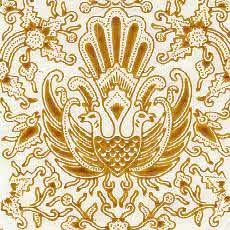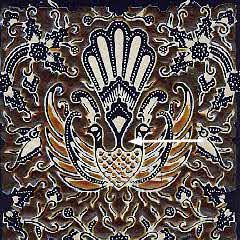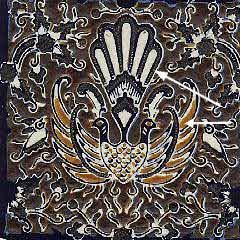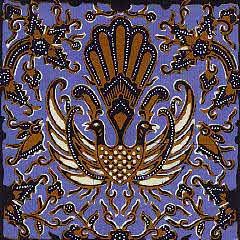The recognition given by the UN agency for education and culture (UNESCO) on batik, which is Indonesia’s cultural heritage, has pleased batik artists in Solo. They expected the recognition would be able to end the polemic between Indonesia and Malaysia on the claim over batik.
However, the artists said it was hard to maintain and prove the fact that batik is Indonesia’s original art. “The hardest parts are retaining and proving, because we know that batik-making techniques have existed since thousands years ago,” the Head of Paguyuban Kampoeng Batik Laweyan Solo, Alpha Febela said to
VIVAnews in Solo on Tuesday, September 2009.
He also said the techniques were not coming from Indonesia. Only out of several countries, the most rapid batik development took place in Indonesia. “Some said batik-making techniques from Middle East and Mesopotamia made its way to Indonesia together with the teaching of Islam. But, the biggest development occurred here, like the richness of the motives,” Febela said.
UNESCO’s recognition, he said, has been a great motivation to the batik artists to confidently expand their batik business especially now that the artists are in high spirit to go international. “It is expected to boost the production and the sales of batik in the future,” he said.
Malaysia’s claim over batik, which surfaced several times ago, according to Febela, did not affect batik exports market. “Probably, it is a just psychological effect. To us, the claim is merely a rumor because there isn’t any rejection over our exports to Malaysia,” he said.
Meanwhile, the Secretary of Paguyuban Kampung Wisata Batik Kauman Solo, Makmun Puspanegara said he was quite happy about UNESCO’s recognition. In Solo, batik industry started to grow rapidly in 2006.
“A few years before, there were only about sixteen batik artists in Kampung Kauman Solo. Now, there are around fifty of them,” Puspanegara said.
On the patterns of batik, he acknowledged that the number is pretty significant. They have even existed since the era of Kasunanan Palace in Surakarta. “Paguyuban batik Kauman has also helped gathering batik motives up to 500 kinds. The motives would later be registered and patented,” Puspanegara said.
He also appreciates President Susilo Bambang Yudhoyono’s intention to include batik making in school curriculum. Therefore, students would be familiar with batik as one of Indonesia’s cultural heritage.
And the last one is from
The Jakarta Globe:
Unesco Lists Batik As Indonesian Cultural Heritage
Bogor. The United Nations Educational, Scientific and Cultural Organization has officially recognized batik as an Indonesian cultural treasure, Coordinating Minister for People’s Welfare Aburizal Bakrie said on Monday.
“We have received notification from Unesco that batik has now been listed as part of Indonesia’s cultural heritage,” Aburizal said after attending a cabinet meeting chaired by President Susilo Bambang Yudhoyono at Bogor Palace in West Java.
Unesco, according to Aburizal, would make public its decision to recognize batik as a unique hallmark of the country’s heritage during a meeting of the Intergovernmental Committee of Intangible Heritage, held from Sept. 28 to Oct. 2 in Abu Dhabi, United Arab Emirates .
To celebrate batik’s recognition, he said, Yudhoyono had appealed to the public at large to wear batik as a sign of respect for the culture. “The president has asked us to preserve our culture.”
The government has conducted field research since 2008 involving batik-producing communities and experts in 19 provinces across the country in preparation for the nomination of batik as a cultural artifact.
“Batik is not only considered part of Indonesia’s cultural heritage, but is also now recognized as a representation of humanity’s culture,” Aburizal said, adding that as a traditional cloth, batik was rich in value as well as cultural inheritance.
Meanwhile, Culture and Tourism Minister Jero Wacik said that in 2003, Unesco recognized wayang kulit , or shadow puppets, and a traditional dagger as aspects of the country’s cultural heritage, adding that it would continue to seek Unesco recognition of its cultural artifacts.
Well, basically we're really, REALLY happy. We mean, who aren't happy when your culture are now recognized by UNESCO. This will make clear who's the right owner of Batik, right??? Hopefully, UNESCO will recognized ALL of Indonesian's cultures and there will be no claiming like now....







































